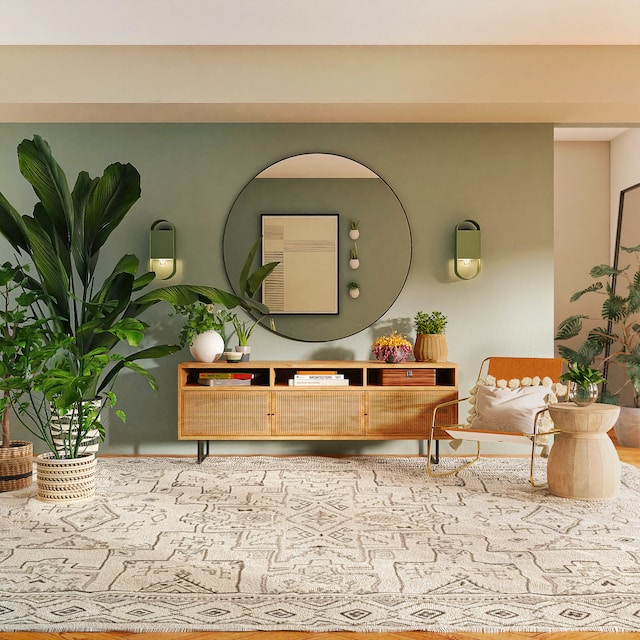
Colors have a profound effect on our emotions and can have a significant impact on how we feel and behave. Understanding color psychology can be a powerful tool in interior design for producing spaces that evoke particular emotions and establish the desired ambiance. This blog post will examine the emotional effects of various hues and discuss how to use color in interior design to change your living space look.
Revealing Emotional Connections
Colors can elicit feelings and have an impact on how we feel psychologically. Here is a closer look at some of the most popular hues and the feelings they evoke:
Blue Quiet and Peace
The color blue is frequently linked to tranquility, serenity, and calmness. It has a calming effect that may aid in easing tension and encouraging rest. Darker blues can add depth and sophistication to living spaces, while lighter blues are frequently used in bathrooms and bedrooms.
Red Vitality and Passion
Red is vibrant and intense, inspiring vigor, passion, and excitement. It can heighten heart rate and blood pressure and stimulate the senses. Use red as an accent color in areas where you want to infuse energy, like dining rooms or entertainment spaces.
Yellow Joy and Positivity 3.
Yellow is frequently linked to joy, optimism, and positivity. It can give a space a feeling of coziness and joy. Use caution when using too much yellow, as it can also cause agitation or feelings of anxiety.
Green Harmony and Balance
The color green stands for harmony, renewal, and balance. It is known to lessen eye strain and have a calming effect. Include greenery in living rooms or home offices to evoke a sense of tranquility and nature.
Purple Luxury and Creativity
Purple is a color frequently connected to spirituality, wealth, and creativity. Darker purples convey luxury and sophistication, while lighter purples can add a hint of femininity and elegance.
Orange Coziness and Exuberance
Warm and energizing orange is a color that inspires enthusiasm and creativity. It is an excellent option for entryways or gathering areas because it can add a warm and lively touch to any area.
Colors in Interior Design
Now that we know how different colors can evoke different feelings let’s look at how to use them effectively in interior design to create the ideal atmosphere in various spaces:
Choose soft, cool hues like light blues, greens, or lavender in bedrooms for a calm and restful atmosphere. These hues encourage serenity and better sleep.
Living rooms Use warm, earthy colors like terracotta, warm browns, or beige to create a welcoming atmosphere. To add life to the room, you can also add accents of vivid color through accessories or artwork.
Think about using green or blue-green tones in your home office for a focused and productive work environment. These hues can ease eye strain while improving focus and creativity.
Dining rooms: Use warm, rich colors like red, orange, or deep yellow to pique appetites and create a lively atmosphere. These colors can improve the dining experience and promote conversation.
Bathrooms: Use calming hues like light blues, pale greens, or soft pinks to create a spa-like retreat. These hues have the power to evoke calm and relaxation.
Creating Harmonious Color Palettes
Individual colors can have a significant impact, but the secret to creating harmonious and balanced color palettes is to combine them carefully. The color wheel can be a helpful tool when selecting complementary or analogous colors that go well together.
Complementary Colors On the color wheel, complementary colors are those directly opposite, such as blue and orange or red and green. Together, they produce a vivid and dynamic contrast that can enhance visual appeal in a space.
Similar Colors Like blue and green or red and orange, similar colors are found next to one another on the color wheel. These hues produce a more subdued and harmonious appearance, making them suitable for establishing a unified and soothing environment.
Remember that the color’s intensity and saturation greatly influence the overall impact. Consider using various tints and shades of color to achieve the desired effect.
Finally, color psychology is a valuable interior design tool that lets you control your living spaces’ ambiance and feelings. You can design spaces that inspire, unwind, and reflect your style by comprehending the emotional associations that various colors have and using them strategically.
To transform your living spaces into havens of feelings and experiences, whether you want to bring a sense of calmness, energy, or creativity into your home, let the power of colors be your guide.
Learn how the psychology of color can affect mood and feelings in interior design, learning to use different colors strategically to create aesthetically pleasing and inspiring living spaces that reflect your style.
